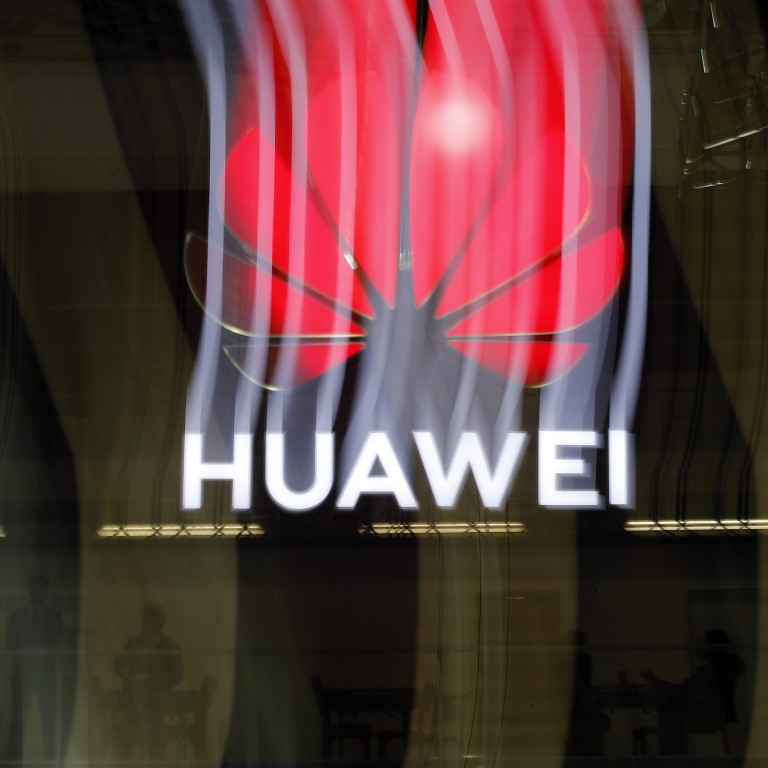
Huawei sees ‘difficult year’ ahead after it closes 2019 with 18 per cent revenue growth despite US trade ban
- Huawei shipped a total of 240 million devices in 2019, up from over 200 million units last year
- The HMS ecosystem, when rolled out, would replace Google Play Services with a library of apps for overseas users
Huawei said its 2019 revenue is expected to jump 18 per cent, with numbers exceeding 850 billion yuan (US$121.6 billion) even amid a bumpy year that saw it added to a US trade blacklist.
“Despite concerted efforts by the US government to keep us down, we’ve made it out the other side and continue to create value for our customers,” said Huawei rotating chairman Eric Xu in a New Year’s message to employees.
“These figures are lower than our initial projections, yet business remains solid and we stand strong in the face of adversity.”
The US, which over the past year has cautioned its allies that Huawei’s telecommunications gear poses a national security threat to networks globally, put the Shenzhen-based firm on the Entity List in May, forbidding Huawei from doing business with US companies. The move cut off Huawei’s access to critical hardware and software, such as semiconductors as well as access to Google services on the Android mobile operating system.
Following the ban, Huawei slashed its revenue forecast from about US$125 billion to US$100 billion in June, as it planned to scale back production in anticipation of softening demand for its smartphones in overseas markets.
Can Huawei’s Richard Yu rise to No 1 in the world’s smartphone ranking?
In terms of smartphones, Huawei shipped a total of 240 million devices in 2019, up from over 200 million units last year. The company did not break down the proportion of device sales within its home market and overseas.
Looking ahead to 2020, Xu was less optimistic, cautioning that 2020 would be a “difficult year” as the company expects to remain on the US Entity List.
“We won’t grow as rapidly as we did in the first half of 2019, growth that continued throughout the year owing to sheer momentum in the market,” he said, emphasising that “survival” will be the company’s first priority.
On a positive note, Huawei confirmed on Tuesday that the Indian government has given it the green light to participate in trials for 5G networks in the country. The decision is a much-needed boost for the Chinese telecoms giant at a time when the US government is continuing to lobby allies against using Huawei equipment in their networks.
“We thank the Indian government for their continued faith in Huawei. We firmly believe that only technology innovations and high quality networks will be the key to rejuvenating the Indian telecoms industry,” said Jay Chen, CEO of Huawei India.
As the company grapples with the loss of access to the Google-equipped Android mobile operating system, Huawei plans to double down on efforts to create its own Huawei Mobile Services (HMS) ecosystem, which would allow developers to create apps for Huawei devices.
The HMS ecosystem, when rolled out, would allow apps to run on the open-source Android operating system, but would replace Google Play Services with a library of apps for overseas users. In China, Huawei’s devices do not ship with Google services, which are blocked in the country.
“The ecosystem for Huawei Mobile Services (HMS) is the foundation of our ability to sell smart devices in markets outside China,” said Xu.
“In 2020, we need to go all out to build the HMS ecosystem, ensure that we can keep selling our smartphones in overseas markets, and support the innovation of our application partners.”
In the message, Xu also highlighted that the company will undergo some transformation to “hone [its] ability to fight”. Teams that do not help enhance Huawei’s competitiveness or strategic support will be “merged or downsized”, while mediocre managers such as those performing in the bottom 10 per cent will be removed, Xu said.
“The US government’s campaign against Huawei is strategic and long-term. It’s a great opportunity for us to motivate ourselves and build up some muscle,” he said. “Fortune favours the bold.”
Additional reporting by Jane Zhang

